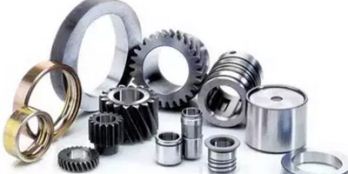1,Folding
Folding is formed by the convergence of oxidized surface metals during metal deformation(mainly the forging process of the forging press).It may be formed by the confluence of two (or more) strands of metal convection;It can also be formed by the confluence of a rapid and massive flow of a metal which carries the surface metal of an adjacent part with it.It can also be formed by bending and reflux of deformed metal.Can also be part of the metal local deformation, pressed into another part of the metal and formed.Folding is related to the shape of raw material and blank, the design of mould, the arrangement of forming process, the lubrication condition and the actual operation of forging.Folding not only reduces the bearing area of the parts, but also becomes a source of fatigue due to the stress concentration.
2,Cross flow
Cross flow is a form of improper streamline distribution. In the cross flow zone, the original streamlines with a certain Angle distribution converge to form the cross flow, which may cause a great difference in grain size between the cross flow zone and the outside. The reason of cross flow is similar to folding, which is formed by two or one metal with another metal confluence, but the cross flow part of the metal is still a whole part.The mechanical properties of forgings are decreased when the grains on both sides of the forgings are different.
3. Forging streamline distribution is not suitable
The unconformity of forging streamline distribution refers to the phenomenon of streamline cutting, reflux and eddy current on the lower power of forging. If the die design is not proper or the forging method is not reasonable, the flow line of the prefabricated blank is disordered.Improper operation of workers and uneven metal flow caused by mold wear can make the distribution of forging streamline uneven. The difficulty of streamline will reduce the mechanical properties of all kinds, so for important forgings, there are requirements of streamline distribution.
4. Residual casting structure
The residual structure of casting occurs mainly in forgings using ingots as billets. The as-cast structure mainly remains in the difficult deformation area of the forging. Insufficient forging ratio and improper forging method (choose the right forging press equipment)are the main causes of residual casting structure. The properties of forgings, especially impact toughness and fatigue, will be degraded by residual microstructure.
